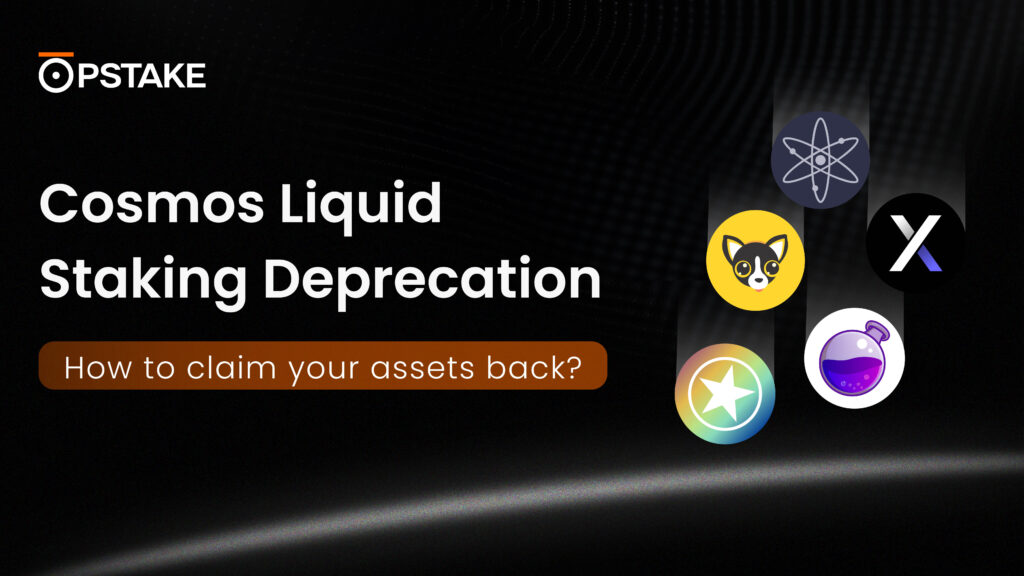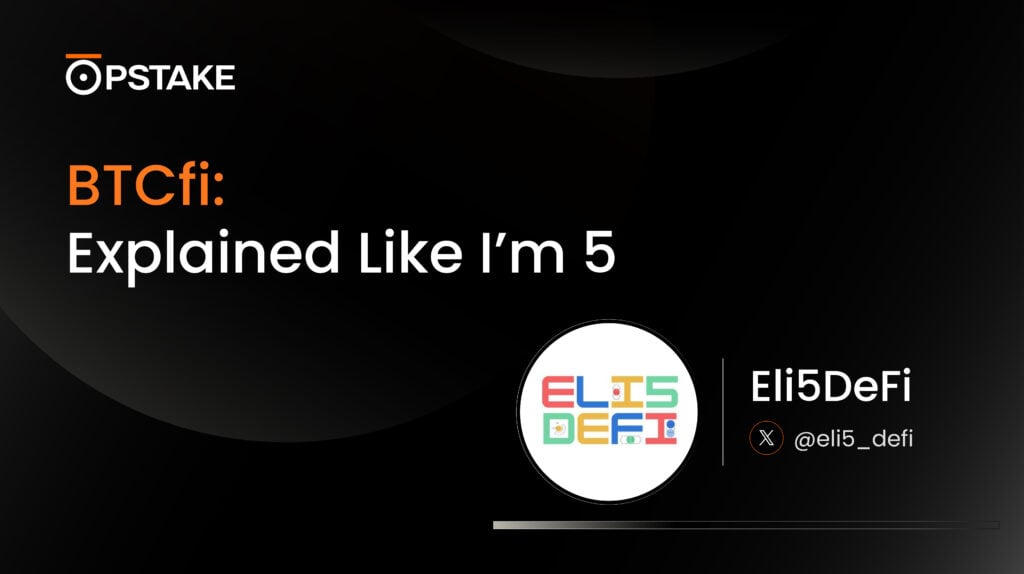This article is a result of “going down the rabbit hole of today’s Bitcoin landscape” piece written by Mikhil Pandey, Co-founder and Chief Strategy Officer of Persistence Labs (core contributor to the pSTAKE Finance protocol).
With this, I try to take you through Bitcoin’s role in crypto, today’s building on Bitcoin landscape, where BTC liquid staking comes in, and where I think we’re headed next.
Please note that these are merely my thoughts and observations, and in no way or fashion meant to be financial advice.
Understanding Bitcoin and BTC
Store of value? Largest peer-to-peer payments network? World’s remittance system? Digital Gold? TradFi hedge? First-ever Proof-of-Work blockchain?
What is Bitcoin? Which one of the above describes Bitcoin? Simply put, all. And more.
The idea of Bitcoin, a layer 1 blockchain initially designed for the trustless and transparent flow of monetary value, came amidst the 2008 Global Financial Crisis.
BTC, the native digital asset empowering this network, has gone from one of the most daring financial experiments of our time to becoming the biggest cryptocurrency.
Today, Bitcoin, the network and the asset, has become a playground for finance, mechanism design, and hope.
- The brightest minds are driving Bitcoin into a future where it becomes more useful, capital efficient and programmable
- The biggest institutions in the world are offering BTC ETFs to give exposure to the common masses
- The new-age builders are finding unique ways to leverage the Bitcoin block space with Ordinals, NFTs, BRC-20, Runes, Staking, and more
- The Bitcoin network activity is at an all-time high and generating more value (fees) than ever for miners
There’s something for everyone with Bitcoin. The best part about it is that the various perceptions of BTC are a feature, not a bug.
Two prongs of Building on Bitcoin
To the public eye, Bitcoin is slowly transitioning from a ‘network’ to an ‘ecosystem’. Building on top of Bitcoin has seen parabolic growth lately.
But this isn’t new. Besides network improvements by the community, multiple stakeholders have tried to build on top of Bitcoin. In fact, that was a part of Satoshi Nakamoto’s vision.
“The design supports a tremendous variety of possible transaction types that I designed years ago. Escrow transactions, bonded contracts, third party arbitration, multi-party signature, etc.
Satoshi Nakamoto
If Bitcoin catches on in a big way, these are things we’ll want to explore in the future, but they all had to be designed at the beginning to make sure they would be possible later.”
Continual attempts have been made since 2012 to scale Bitcoin beyond just payments:
- Decentralized Domain Name Service (Namecoin)
- Broader Asset Representation (Colored Coins, MasterCoin, Counterparty)
- Scaling Bitcoin Network with Sidechains, Rollups and L2s (Taproot, Stacks, Liquid Network, Merlin, Urbit, Lightning, bitVM, and more)
- Scaling BTC Functionality with Ordinals and Runes (Memes, NFTs, BRC-20, BRC-420) and yield (Babylon, BounceBit, Stroom Network, Trustless Machines and more)
But where do these developments lead BTC to? This is best summarized by Portal Ventures’ Bitcoin Thesis. Catrina Wang breaks down all developments in the Bitcoin Ecosystem as:
- Making Bitcoin more programmable
Addressing the smart contract and scaling limitations to deploy on the Bitcoin Network - Making BTC more capital efficient
Hyperfinancialization by building with BTC
BTC Liquid Staking and where does it fit?
Bitcoin is a Proof-of-Work network where miners contribute computing power to solve arbitrary mathematical puzzles for block production and are rewarded with new bitcoins.
So how does Staking come into the picture, let alone Liquid Staking? Let’s turn a few pages and go back to the basics of a blockchain.
Consensus involves constant agreement on a network’s state (data, transactions, balances, etc.). While PoW relies on computational firepower (mining) to achieve and maintain network consensus, PoS includes the concept of Security Bonds. Staking involves lock up tokens to participate in consensus, contributing to the overall network security, and earn staking rewards.
When we need to trust other people/counterparties to behave well, security deposits are often instituted to guarantee good behavior. A typical example is Landlords taking security deposits from tenants.
Simply put, PoS is driven by the trust in the economic security of assets. And what better asset than one that has billions of dollars in economic trust sitting idle? What better than BTC?
By ‘locking up’ BTC, its economic security can be exported to practically any crypto application. Imagine a world where financial applications including blockchains of various shapes and sizes can be empowered with BTC, adding to the liveness and safety of each.
Trustless BTC staking (and consequently liquid staking) opens up a pandora box for BTC-first and BTC-led DeFi to flourish, making BTC more capital efficient. Money markets, Stablecoins, Economic Security, Insurance, and more. The applications are endless.
What’s next for BTC and Bitcoin?
One may argue, isn’t BTC already capital efficienct with its market cap run-up, adoption, and premier store of value status in crypto?
That goes to the question of why capital efficiency really is? Wall Street defines it as ‘how efficiently a company spends its money to operate and grow’. In that context, BTC is, well, mostly sitting idle with retail holders, miners, and institutions. In the Proof-of-Work world, BTC isn’t really put to work at the moment.
This can be attributed to multiple factors:
- Lack of sustainable yield opportunities
- Friction of risk-averse holders to ‘move’ BTC
- Missing institutional-friendly yield products
- Unknown security risks of moving BTC away from the Bitcoin network
- Opposition from some OG Bitcoiners
Industry-wide efforts in the recent past have persistently progressed towards solving for each of the above hurdles for BTC to unlock its liquidity and capital efficiency in this orange-pilled crypto world.
While the Bitcoin community seems a bit divided and fragmented (which is always the best), watch out for the biggest Bitcoin Ecosystem developments like Bitcoin L2s, trust-minimized BTC staking, Ordinals and Runes, VM, and more.
BTC liquid staking is not just a narrative. It’s here to stay and possibly dictate crypto yield. Bitcoin’s future has never been so exciting with simple BTC-first financial products anticipated to bring in much-needed liquidity and utility to today’s DeFi landscape.
We’ve already seen the parabolic rise of Ethereum Liquid Staking and the subsequent developments that have boomed on-chain finance. One can only imagine the possibilities and doors that open when the same happens for an asset that created the ‘crypto’ asset class in the first place.
About pSTAKE Finance
pSTAKE Finance is a multichain liquid staking protocol for BNB Chain, Solana, Cosmos, and beyond, backed by Binance Labs.
Users can securely stake the biggest crypto assets and receive liquid staked tokens (LSTs) called stkTokens that can be used in DeFi to generate additional yield. stkTokens by pSTAKE Finance offer one of the highest DeFi yields, thanks to low fees and partnerships with the biggest DeFi ecosystems.
pSTAKE Finance helps decentralize networks with its unique stake delegation strategy, powered by an intelligent algorithm based on on-chain decentralization parameters.
pSTAKE Finance has partnered with leading blockchain security firms like Halborn, Hexens, Oak Security, Immunefi, Forta, and more to offer a secure liquid staking experience.
pSTAKE Finance is the only liquid staking protocol to be integrated with Ceffu Global (Binance Custody) to offer institutional-grade liquid staking for all.
PSTAKE is the governance and incentivization token of the pSTAKE Finance protocol with some of the biggest investors including Binance Labs, DeFiance Capital, Spartan Group, Coinbase Ventures, DeFiance Capital, and more.










